According to the State of Michigan, the total number of COVID cases in Michigan rose to 48,021 on May 12, an increase of 469 cases from the previous day. This total was equivalent to 481 cases per 100,000 people (Chart 4). The five-day rolling average for the total number of COVID cases (Chart 1) reflects a smoother curve and adjusts for fluctuations in testing and/or the quality of reporting or failure to report. That upward trend of the curve has been flattening in recent weeks as the number of new COVID cases, both throughout the State and regionally, gradually declines. In Southeastern Michigan, Detroit reported the highest number of daily cases at 66 on May 10; this was a decline from the day before (Chart 3). Note that this five day rolling average causes these daily case and daily death charts to lag two days behind.
Chart 2 shows that, based on the five-day rolling averages, the number of new COVID cases in Southeastern Michigan continues to progress upwards at small increments, giving way to a much flatter curve than when the virus first landed in Michigan. The number of cumulative COVID cases remained the highest in Detroit at 9,778 on May 10, with Wayne County following at a reported 8,287 cases. On May 10, the five-day rolling average for the number of COVID cases in Oakland County was 7,726, and Macomb County reported 6,037.
The daily data highlighted in these posts is from Michigan.gov/coronavirus, where data is updated daily at 3 p.m. Historical data were supplied from covidtracking.com, which republishes COVID data from the State.
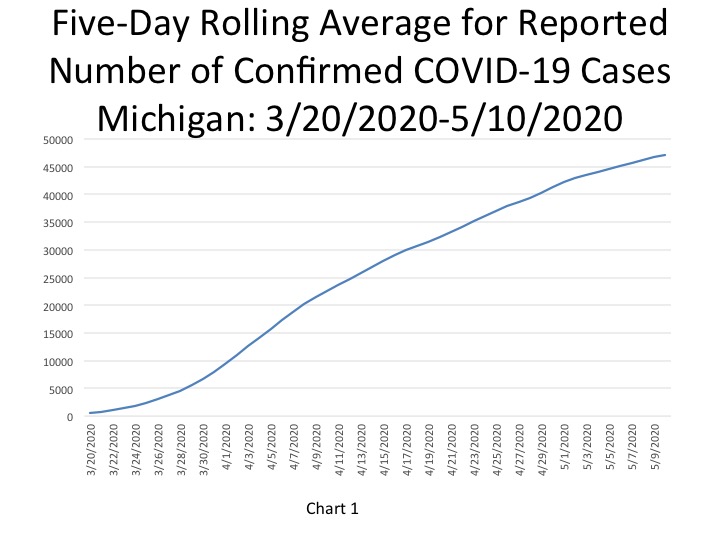
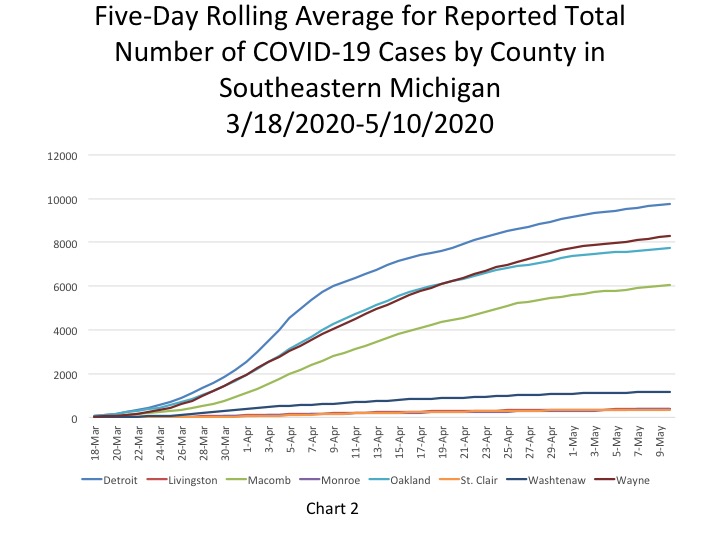
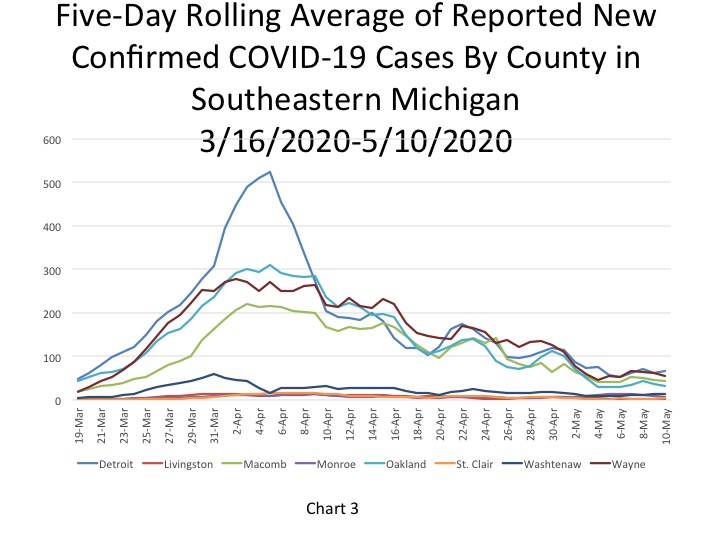
The City of Detroit had 1,471 COVID cases per 100,000 people on May 12, an increase from 1,464 the day before (Chart 4). This is based upon a reported increase of 46 new cases, bringing the total number of COVID cases in Detroit to 9,897. Wayne County reported 1,245 cases per 100,000 people, and Oakland County had 1,157 cases per 100,000 people. These per capita rates were based upon 8,377 total cases for Wayne and 7,784 for Oakland. Macomb County reported 906 cases per 100,000 people, which is based upon 6,097 cases.
Chart 5 shows that the per capita rate for the number of new daily COVID cases per 100,000 people is much closer in range for all counties and the City of Detroit now than it was even a week ago. On May 12 the per capita rates ranged from 1 new COVID case per 100,000 people (Livingston County) to 7 new COVID cases per 100,000 people (Detroit). The per capita rate for Detroit and Wayne County did slightly decrease from the day prior while the remaining counties in Southeastern Michigan experienced a slight increase. For Detroit, the per capita rate of 7 was equal to 46 new cases and Wayne County’s per capita rate of 3 new COVID cases per 100,000 people was equivalent to 34 new cases. Oakland County reported a per capita rate of 3 new cases per 100,000 people on May 12, which was equivalent to 32 new cases, and Macomb County reported a rate of 4, which was equivalent to 33 new cases.
The State’s per capita rate was 3.8 new cases per 100,000 people, equivalent to 469 new cases. In total, of the 469 new cases, Southeastern Michigan accounted for 174 of them.
The chart also shows that the per capita rates for the number of daily COVID cases has been fairly stable for the last several days.

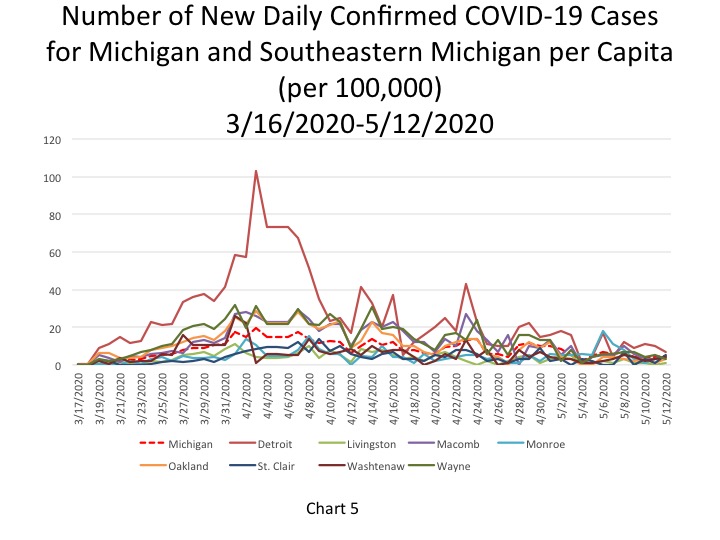
In Chart 6, the five-day rolling average for the number of deaths shows a continuing slow increase (a lagged number of 4,546 deaths, an increase of 66 deaths). The actual reported COVID-19 deaths reached 4,674 on May 12, an increase of 90 deaths from the day prior. Of those 90 daily deaths, 19 were added to the May 12 total as a result of the State reviewing death certificates with the COVID database. Even when removing the 19 additional deaths added to the daily total, the number of additional deaths more than doubled from the previous day. However, the overall death curve is increasing at a much slower rate than it was even just 10 days ago. Additionally, Southeastern Michigan contributed 74 additional deaths to the overall 90 reported on May 12.
Chart 7 portrays how the total number of COVID deaths in Southeastern Michigan continues to increase, but that rate of increase has been gradually declining overall, and the curve is slowly starting to flatten. The rate of increase is gradually declining because the number of additional deaths throughout the State (Chart 8) and the region, overall, are declining. Chart 9 highlights how some of the entities that have continuously contributed to the State’s overall growth in COVID deaths have experienced declines in the number of daily COVID deaths. Oakland County reported the highest number of additional deaths on May 10 at 17, this was based on a 5-day rolling average calculation. Detroit reported 13 additional daily deaths, the same number it reported the day before. While Oakland County did report 2 more additional deaths on May 10 than it did the day before, for the entire month of May no government entity in Southeastern Michigan has reported more than 20 daily COVID deaths, based on 5-day rolling averages. In April, these entities reported up to as many as 54 daily deaths based on 5-day rolling averages.
Chart 10 portrays the total number of COVID deaths per 100,000 people. As of May 12, the cumulative total of COVID deaths per 100,000 people in Detroit was 180 (representing 1,213 deaths). In Wayne County there were 138 COVID deaths per 100,000 people (927 total deaths), in Oakland County there were 130 deaths per 100,000 people (872 total deaths), and in Macomb County there were 106 COVID deaths per 100,000 people (710 total).
The State of Michigan had 47 COVID deaths per 100,000 people.
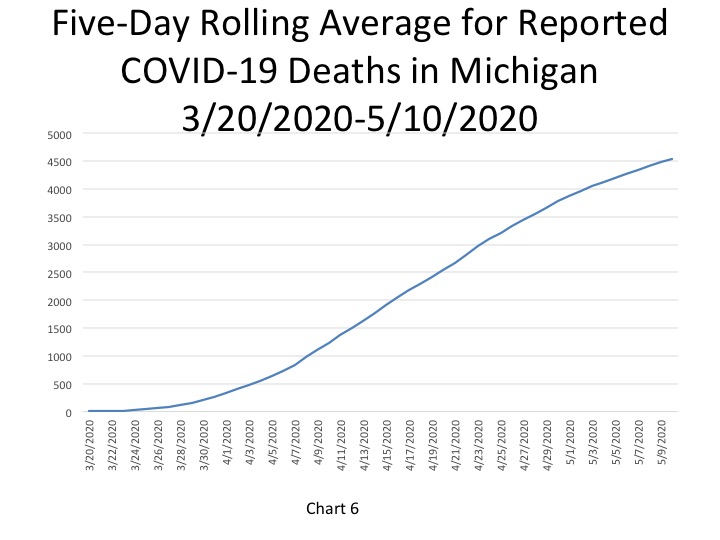
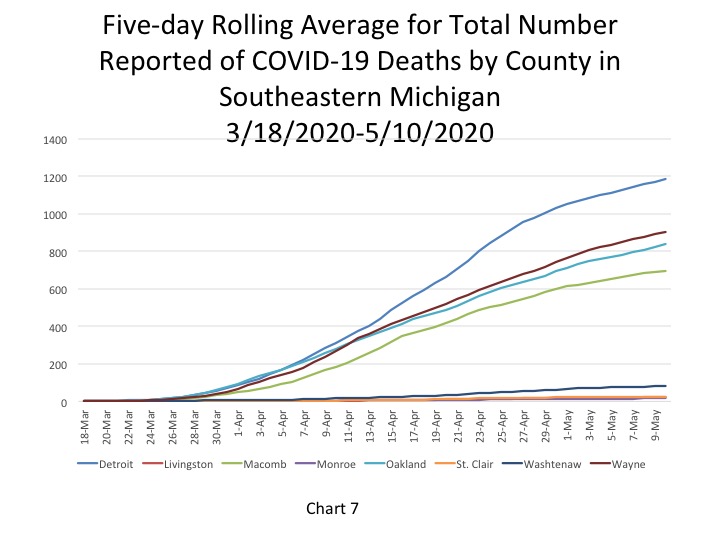
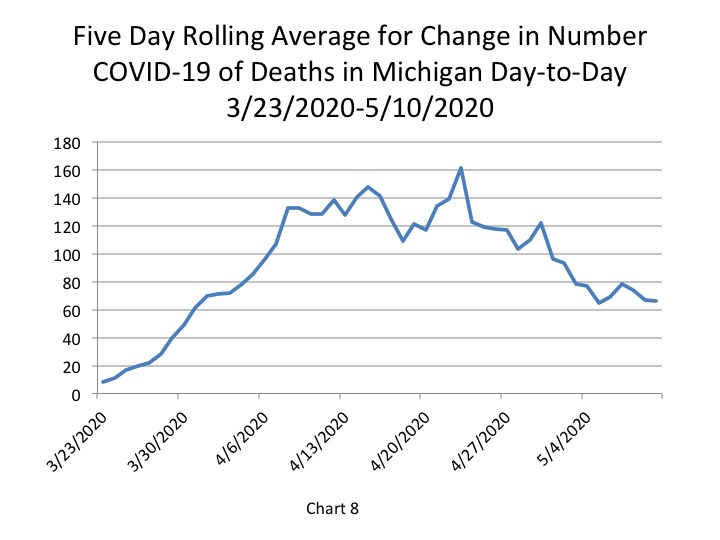
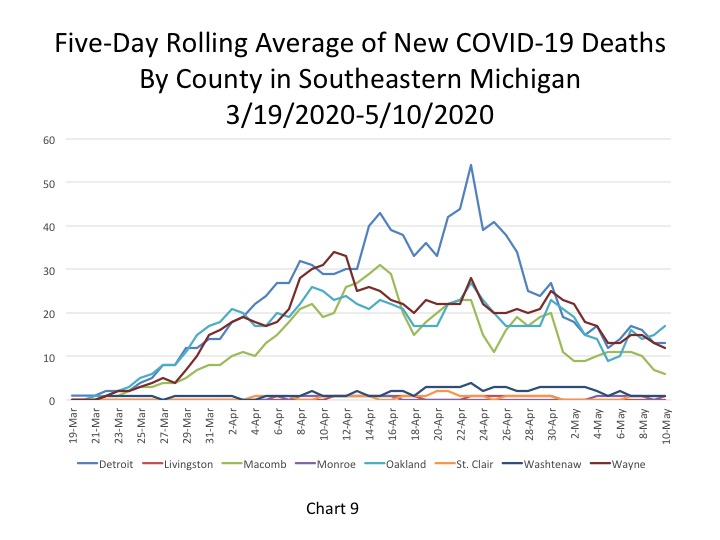
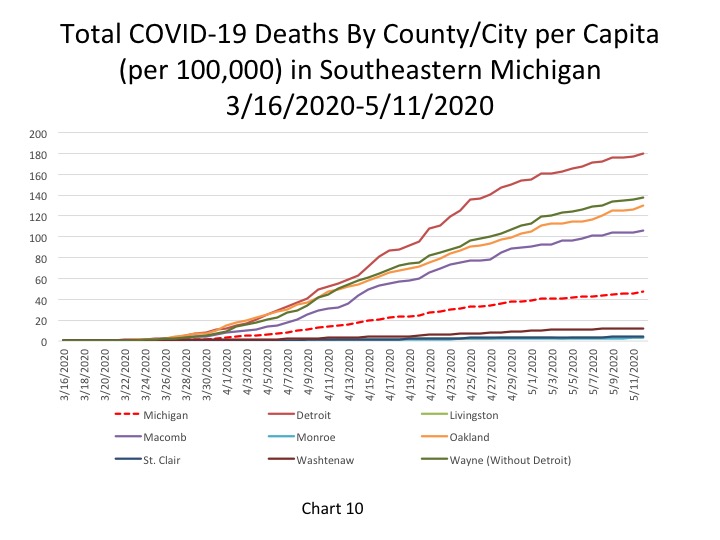
The fatality rates for Detroit and Macomb, Oakland and Wayne counties all reached 11 percent or higher on May 12. Detroit had the highest fatality rate at 12.2 percent. The State reported a 9.7 percent fatality rate on May 12.
One reason we may be seeing such high fatality rates in Michigan is due to the low testing rates. When only having-presumably-a lower of number confirmed COVID cases than is actually likely due to the limited availability of tests, the fatality rate appears higher because the base comparison is smaller than it might be.
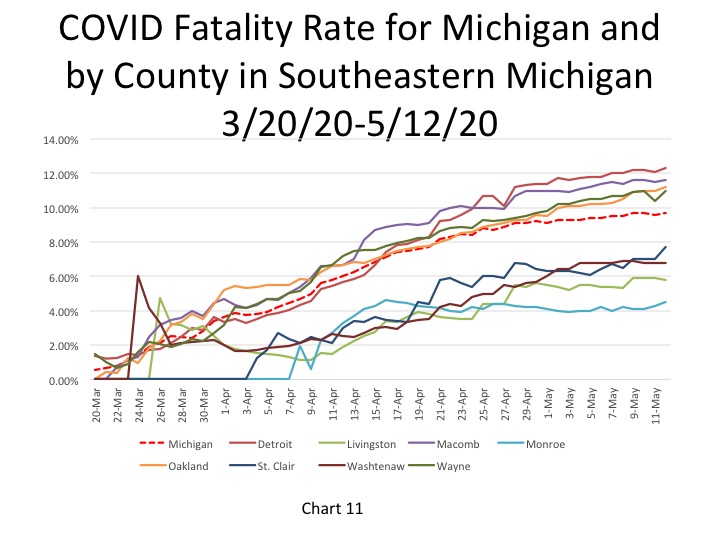
Ninety additional COVID deaths were reported in Michigan on May 12, showing that numbers, although declining, can spike up again on any given day. This is why prevention and testing are key in fighting the spread of the virus, to ultimately ensure the fewest number of people possible become infected. There is a call for an increased rate of testing in Michigan and the Stay-at-Home Order remains in place. However, to prevent the spread of the virus to work settings, the public must remain committed to following the guidelines.